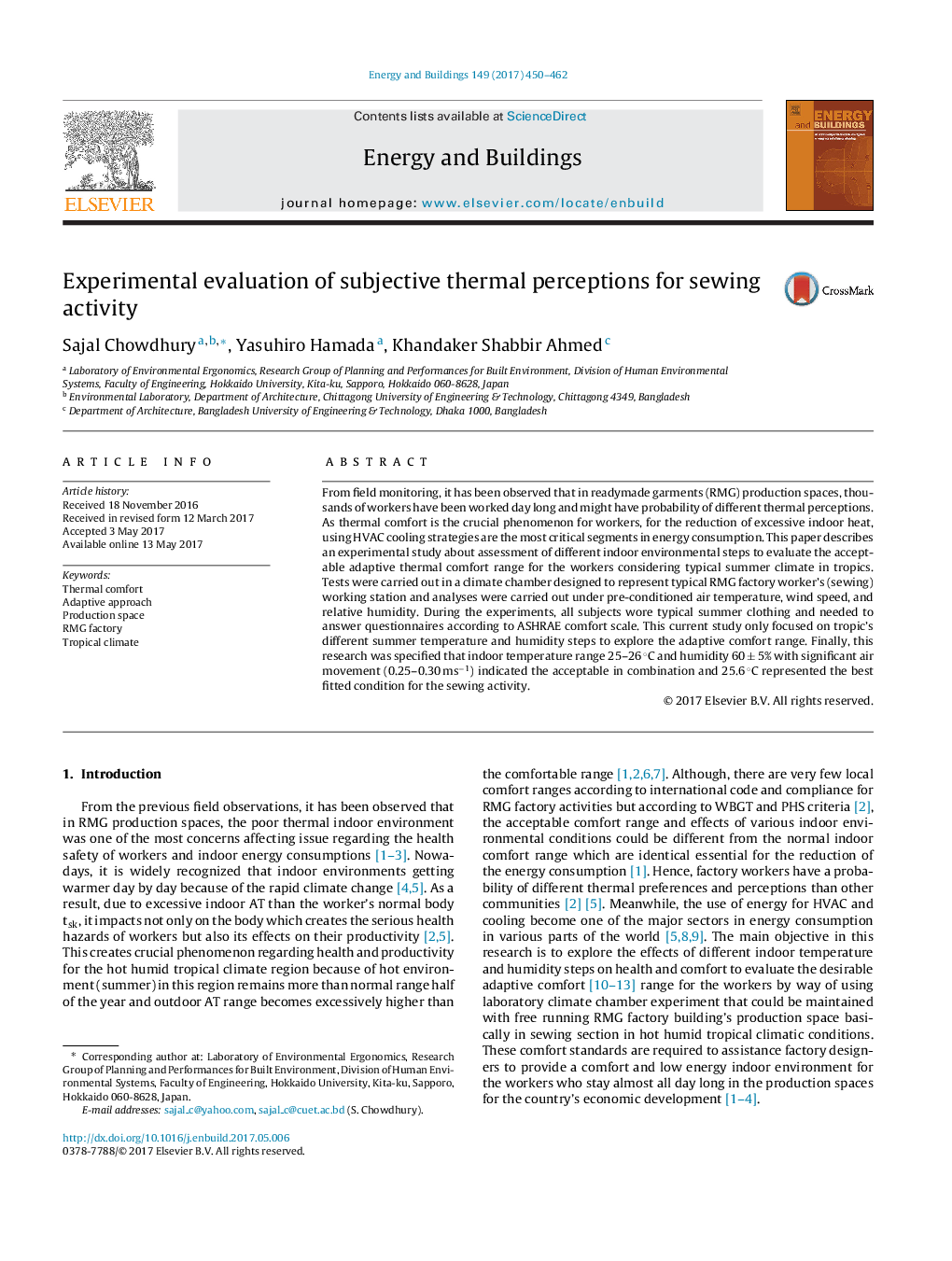| Article ID | Journal | Published Year | Pages | File Type |
|---|---|---|---|---|
| 4919130 | Energy and Buildings | 2017 | 13 Pages |
Abstract
From field monitoring, it has been observed that in readymade garments (RMG) production spaces, thousands of workers have been worked day long and might have probability of different thermal perceptions. As thermal comfort is the crucial phenomenon for workers, for the reduction of excessive indoor heat, using HVAC cooling strategies are the most critical segments in energy consumption. This paper describes an experimental study about assessment of different indoor environmental steps to evaluate the acceptable adaptive thermal comfort range for the workers considering typical summer climate in tropics. Tests were carried out in a climate chamber designed to represent typical RMG factory worker's (sewing) working station and analyses were carried out under pre-conditioned air temperature, wind speed, and relative humidity. During the experiments, all subjects wore typical summer clothing and needed to answer questionnaires according to ASHRAE comfort scale. This current study only focused on tropic's different summer temperature and humidity steps to explore the adaptive comfort range. Finally, this research was specified that indoor temperature range 25-26 °C and humidity 60 ± 5% with significant air movement (0.25-0.30 msâ1) indicated the acceptable in combination and 25.6 °C represented the best fitted condition for the sewing activity.
Related Topics
Physical Sciences and Engineering
Energy
Renewable Energy, Sustainability and the Environment
Authors
Sajal Chowdhury, Yasuhiro Hamada, Khandaker Shabbir Ahmed,
